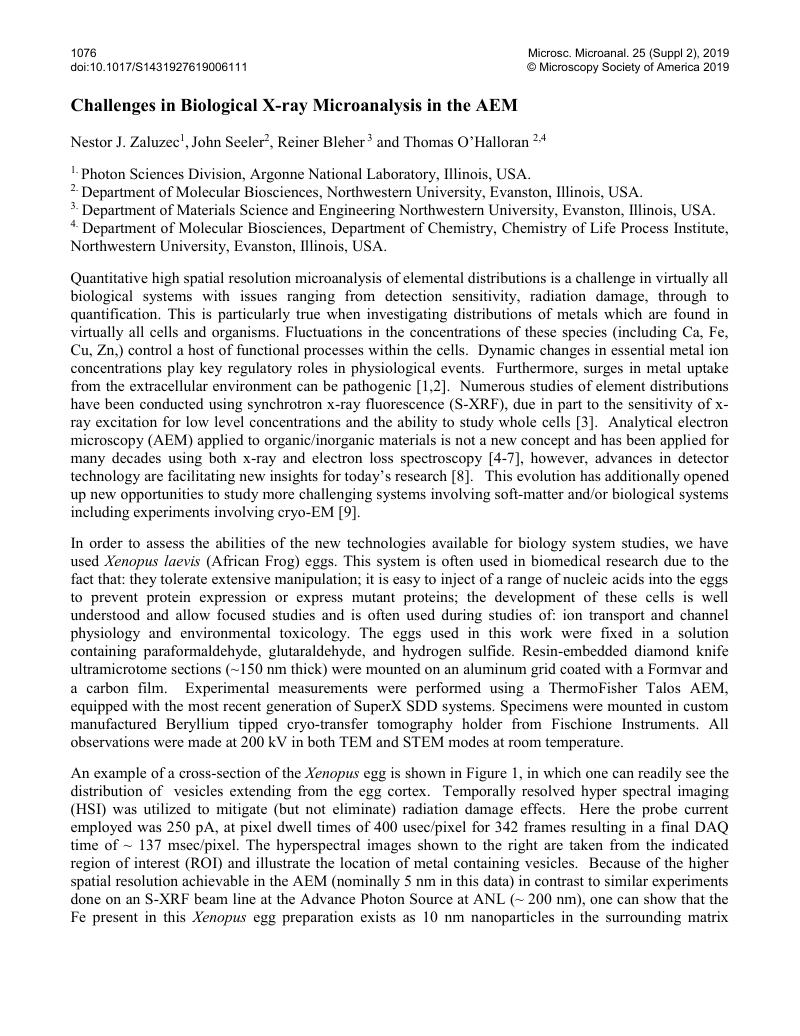No CrossRef data available.
Article contents
Challenges in Biological X-ray Microanalysis in the AEM
Published online by Cambridge University Press: 05 August 2019
Abstract
An abstract is not available for this content so a preview has been provided. As you have access to this content, a full PDF is available via the ‘Save PDF’ action button.

- Type
- Element Analysis of Biological Materials
- Information
- Copyright
- Copyright © Microscopy Society of America 2019
References
[1]Velasco, E, et al. , Sci Rep. 8(1) (2018), p. 6535. doi: 10.1038/s41598-018-24964-1.Google Scholar
[2]Morgan, AJ, et al. , in “Electron Probe Microanalysis” (Springer, Berlin, Heidelberg). https://doi.org/10.1007/978-3-642-74477-8_5Google Scholar
[4]Hall, TA, Physical Techniques in Biological Research, IA, 2nd Academic Press, (New York).Google Scholar
[9]Ovsyanko, M, et al. , Microsc. Microanal. 24(1) (2018), p. 776. doi:10.1017/S1431927618004373Google Scholar
[10]This research was funded in part by Laboratory Directed Research and Development (LDRD) funding No. 2017-153-N0 at Argonne National Laboratory by the U.S. Department of Energy, Office of Science, Office of Basic Energy Sciences, it employed resources in the Center for Nanoscale Materials, an Office of Science user facility, This research also made use of the BioCryo facility of Northwestern University's NUANCE Center, which has received support from the Soft and Hybrid Nanotechnology Experimental (SHyNE) Resource (NSF ECCS-1542205); the MRSEC program (NSF DMR-1720139) at the Materials Research Center; the International Institute for Nanotechnology (IIN); and the State of Illinois, through the IIN.as well as through the grants NIH R01 GM115848 and NIH T32 GM008061.Google Scholar




